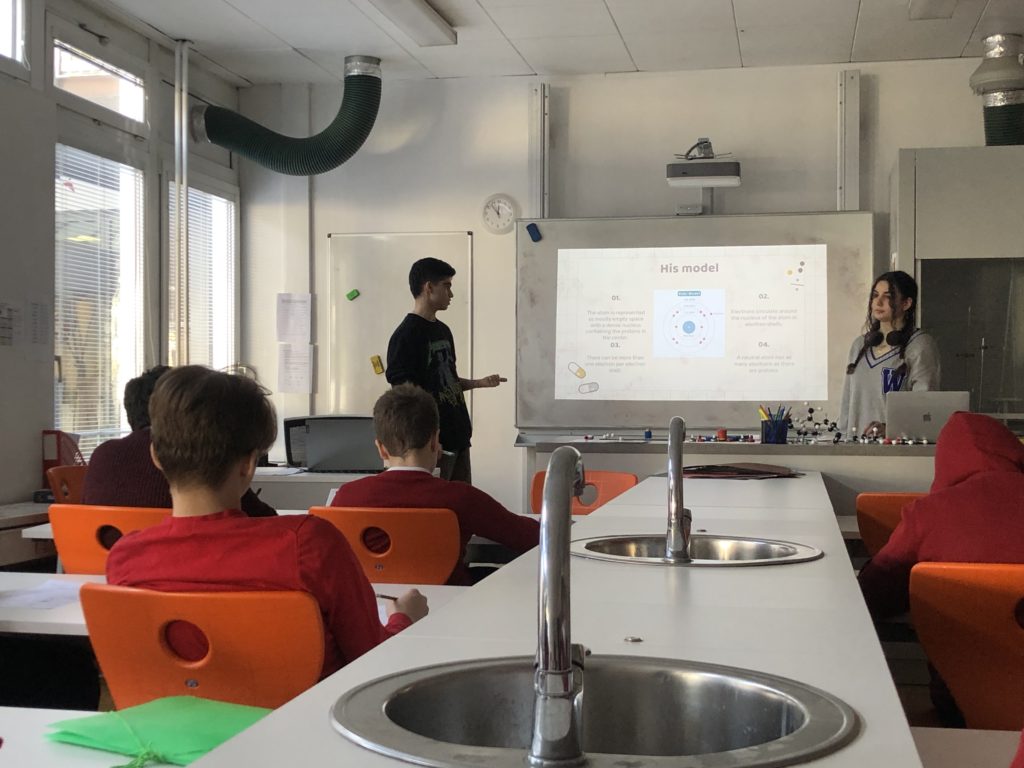Sometimes it is better when students teach the students
A week ago, two DP students, Ema and Mehrad, made a presentation about the development of the atomic model to the MYP2 students.
MYP2 students recently started with a new (chemistry) unit in Science “Everything is made up of atoms” (this quote comes from a physicist Richard Feynman, who was once asked to think of a sentence that would pass the most important scientific knowledge we have).
The idea of the presentation was to show younger students how we got to know what we know now about atomic structure.

Although atoms are not visible with the naked eye we know surprisingly a lot about them. For example we know that atoms, considered the smallest particles of a matter, actually consist of many smaller particles like electrons, protons and neutrons. The last two are responsible for 99,9% of the whole atomic mass and they are located in the nucleus which is ten thousand times smaller than the atom itself. Fascinating, isn’t it?
But when, who and how discovered all that? DP students tried to bring some answers to these questions by explaining the concepts of the technologies which were used to conduct, test and prove ideas of some geniuses of that time.
The students learned that the first time the idea of indivisible particles that all matter is made of came already a very long time ago (by Democritos, 400 B.C.E.), but was forgotten for the next 2000 years when next scientists picked up the idea again and started to investigate it more closely.
In the photo below, Mehrad is demonstrating the Rutherford famous experiment with gold foil, which resulted in the discovery of a nucleus, which changed the atomic model one step closer to the model we know now.

I was glad to see how students of MYP2 listened with an interest, asking reasonable questions and answering the questions of presenters helping them to build some atoms to understand the idea of the isomers.

During the presentations students saw how, step by step, the atomic model was improved and updated, and new questions arose, as in is the model we know now (Schrödinger model) the final version or there is more to question and discover? What about quarks? And is it possible to dig deeper than quarks with the technology and knowledge we have now? What should come first, technology or knowledge?
Those and other questions will be dissected further on at our lessons.
Thank you Ema and Mehrad for the interesting presentation.




